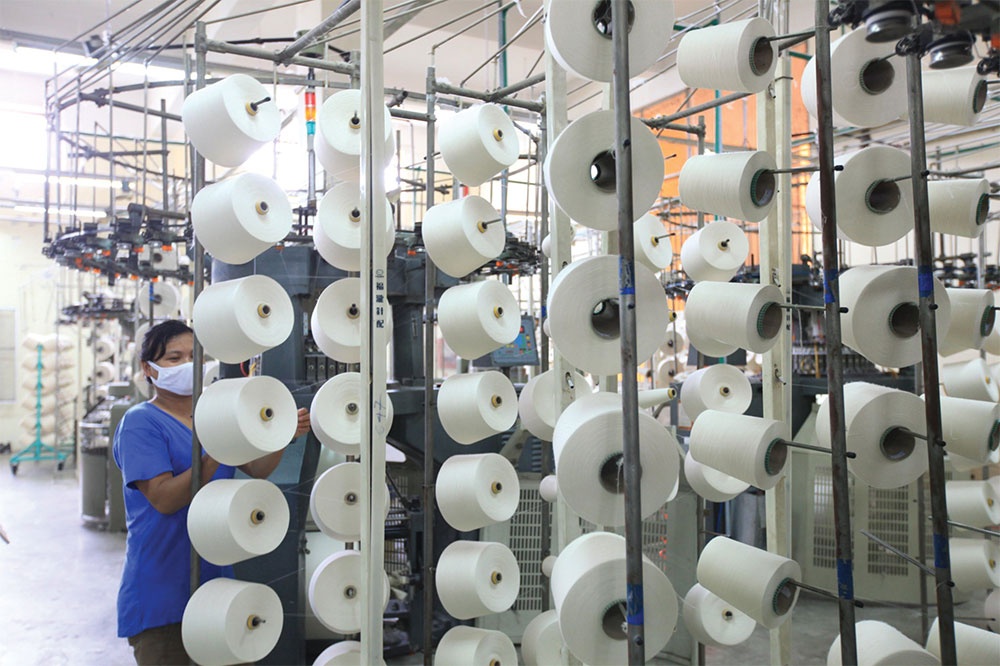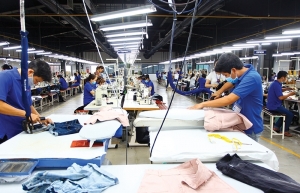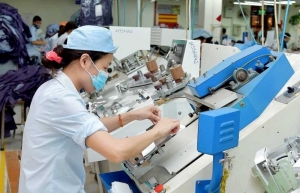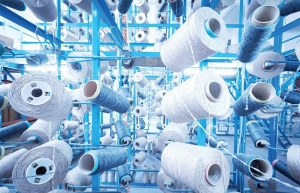Garment and textile groups cracking on with orders
 |
| In the textile industry, businesses said demand will recover, photo Duc Thanh |
At Garment 10 JSC, 12,000 employees across nine cities and provinces returned to work in the last days of January after the festive break. In 2023, Garment 10 targets revenue higher than the previous year, along with developing human resources to meet the development trend of the global textile and garment industry, continuing to diversify product lines, and applying technology solutions and digital management to enhance quality and performance.
“Against the forecast of 2023 containing many difficulties, we will do our utmost to achieve the goals for the year,” said CEO Than Duc Viet. “In addition to Canada and South Korea, which we have been focusing on for the past few years, China will also be a promising land for us.”
In Hanoi’s Thanh Oai district, 250 employees of Supertex Textile JSC started the first official production shift of the new year to work for the order of exporting over one million socks to Japan.
CEO Le Dai Quang said, “At the beginning of the year, everyone wishes for a smooth and convenient job, contributing to the development of the company’s business activities. Despite many woes, the company has taken care of its employees and this is the motivation for employees to do their utmost.”
In 2023, Supertex expects its orders to grow by about 120-130 per cent compared to 2022, equivalent to an export value of $5.5-6 million, as well as expand the market to other big partners and markets such as the US and Europe. In addition to boosting production, Supertex is looking for domestic yarn mills whose products meet the requirements of the Comprehensive and Progressive Agreement for Trans-Pacific Partnership, instead of depending on raw materials from China.
According to the General Statistics Office (GSO), total export value in January when the Tet festival took place was estimated at $25.08 billion, down 13.6 per cent on-month, and 21.3 per cent on-year. Of this, domestic enterprises gained $6.44 billion, down 18 per cent, and foreign-invested ones did $18.64 billion, a decrease of 12 per cent. “This is not very surprising because in recent days, the number of working days is less than in other months and less than in January the previous year,” highlighted the GSO report.
Particularly, the total export turnover of the garment and textile industry in January was $2.5 billion only, down 30.7 per cent on-year, while that of footwear was $1.6 billion, a decline of 17.7 per cent. In addition to the festive holiday, this was caused by the drop in demand in major exporting markets, which are forecasted to struggle with numerous uncertainties of the world’s economy in the first quarter of 2023 at least. However, the grey status does not cover all industries or all exporters in Vietnam, especially in industries in which Vietnam has got high positions and reputations in the global supply chains. In the garment and textile industry, firms believe that the demands will recover despite being on a decreasing trend.
“Buyers over the world do not cut orders from all suppliers. They are selecting and prioritising high-profile vendors. Thereby, against common burdens, there are still opportunities for some Vietnamese garment and textile businesses to welcome big orders,” said Le Tien Truong, chairman of Vietnam National Textile and Garment Group.
“Enterprises that have different characteristics and competitiveness compared to their competitors from other countries can meet small medium-sized orders with various product lines and techniques. Therefore, small orders are still the trend in the coming time,” he added.
The garment and textile industry has set the export target of $47-48 billion in 2023, after the value of $44 billion last year. The Ministry of Industry and Trade aims to support businesses to effectively exploit the signed free trade agreements, enhance competitiveness, and build brand names for sustainable export.
 | Garment and textile groups bemoan curbs With the autumn-winter season coming up, Vietnam’s garment and textile industry could cash in on the increased demand for clothing. However, amid social distancing, a resulting labour shortage, and vastly increased shipping costs, domestic apparel producers are struggling to make use of such opportunity and keep up with orders. |
 | Garment and textiles going green in push to hit turnover goals The garment and textiles industry in Vietnam is going green, with a series of companies and factories embracing eco-friendly initiatives firmly in line with global trends. |
 | Textile groups at pains to regather momentum Orders of textile and garment exporters in the last months of the year have been falling sharply compared to production capacity, combined with fluctuating raw material prices, leaving many businesses to prepare for a bumpy year ahead. |
What the stars mean:
★ Poor ★ ★ Promising ★★★ Good ★★★★ Very good ★★★★★ Exceptional
Related Contents
Latest News
More News
- Empowering Sustainable Data Centers with Smart Infrastructure Solutions (December 16, 2025 | 13:59)
- Vietjet wins gold ESG transport sustainability award in Taiwan (China) (December 13, 2025 | 22:03)
- Legal framework completed for national digital transformation (December 13, 2025 | 21:55)
- SOAR initiative launched at TECHFEST Vietnam 2025 (December 13, 2025 | 10:00)
- Mondelez Kinh Do secures fourth Top 100 Sustainable Company nod (December 13, 2025 | 09:00)
- Vietnam advances three-pillar strategy to prevent cervical cancer (December 12, 2025 | 20:00)
- MCH shares secure approval for listing on HSX (December 12, 2025 | 12:59)
- Raising product quality to secure Vietnam’s position in US market (December 11, 2025 | 12:00)
- Energy efficiency in buildings tops organisations’ infrastructure priorities (December 11, 2025 | 10:40)
- How smart infrastructure and digitalisation power the systemic transition (December 11, 2025 | 10:00)

 Tag:
Tag:




















 Mobile Version
Mobile Version